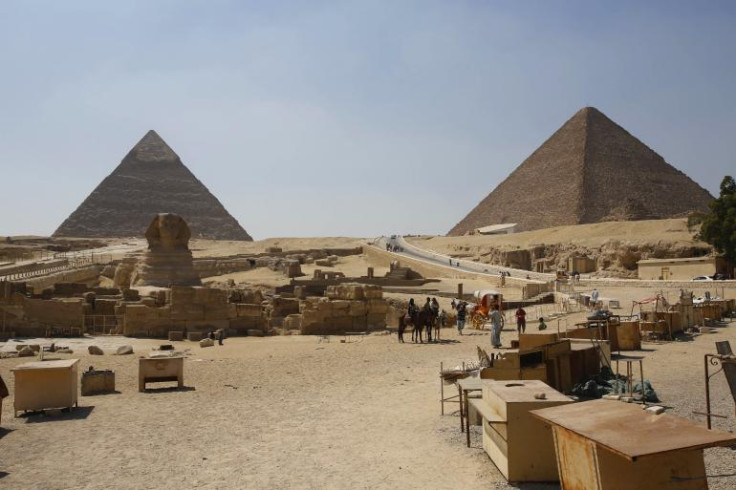Ancient Egypt: 21-Room Mansion Recovered Near Giza Pyramids Tells of the Lifestyle of High and Mighty

Archaeologists digging up a 4,500-year-old site near Giza pyramids have revealed the stupendous lifestyle of the high officials in ancient Egypt.
The archeologists discovered the remains of a huge 21-room mansion dating back to the time when the last of the Giza pyramids was being built.
The compound of the large house had a mound from which leopard teeth, the hind limbs of cattle, and the seals of high-ranking officials were recovered.
Huffington Post reports that the seals were inscribed with titles such as "the scribe of the royal box" and "the scribe of the royal school".
The animal remains at the mansion suggest that the occupants of the house lived a regal life, wallowing in the luxuries of the time. The officials appear to have dressed lavishly and eaten the choicest food.
A sample of about 100,000 bones was collected from the heap near the mansion, but researchers did not find a single cow bone older than 18 months. Only a few sheep and goat bones were recovered from the mound.
"The other thing that is just amazing is almost all the cattle are under 10 months of age ... they are eating veal," Richard Redding, the chief research officer at Ancient Egypt Research Associates, noted while speaking at a recent symposium organized by Egyptian Antiquities Society.
"We have very, very, high status individuals," said Redding.
To find out the mystery behind leopard teeth, Redding consulted ancient drawings dating between 2649 and 2150 BC, the era when the pyramid building peaked. He found that high-ranking officials including royal family members wore leopard skin with attached head.
According to Redding, this explains why only leopard teeth were found and no leopard bones.
Another puzzle was that all the bones found in the mansion mound were hind limbs, and not forelimbs. This, again, made Redding turn to the ancient drawings, where he found numerous examples of scenes where people offered forelimbs to the deities, but not hind limbs. This led him to conclude that people of the house likely ate the remains of the offerings.
Redding's hypothesis is backed by his earlier discovery in 2012, when he had found a "silo building complex" located near a monument dedicated to a Queen of that era, which he thinks was a place dedicated to priestly worships and offerings.
"My analysis of the bones from the small excavations at (the building complex) in 2012, showed a strong bias towards forelimb elements — as to be expected in priestly garbage," Redding had written in an email to LiveScience.
"We will get larger samples this February, but right now my operating hypothesis is that the (complex) was occupied by royal cult priests", he added.
According to the researcher's conjuncture, forelimb bone deposits are likely to be located in and around worship temples, while elite house would be expected to be full of hind limbs from the remains of offerings.
This new discovery might also help the archaeologists to identify and distinguish dwellings of ancient priests and the houses of elite.
© Copyright IBTimes 2025. All rights reserved.





















